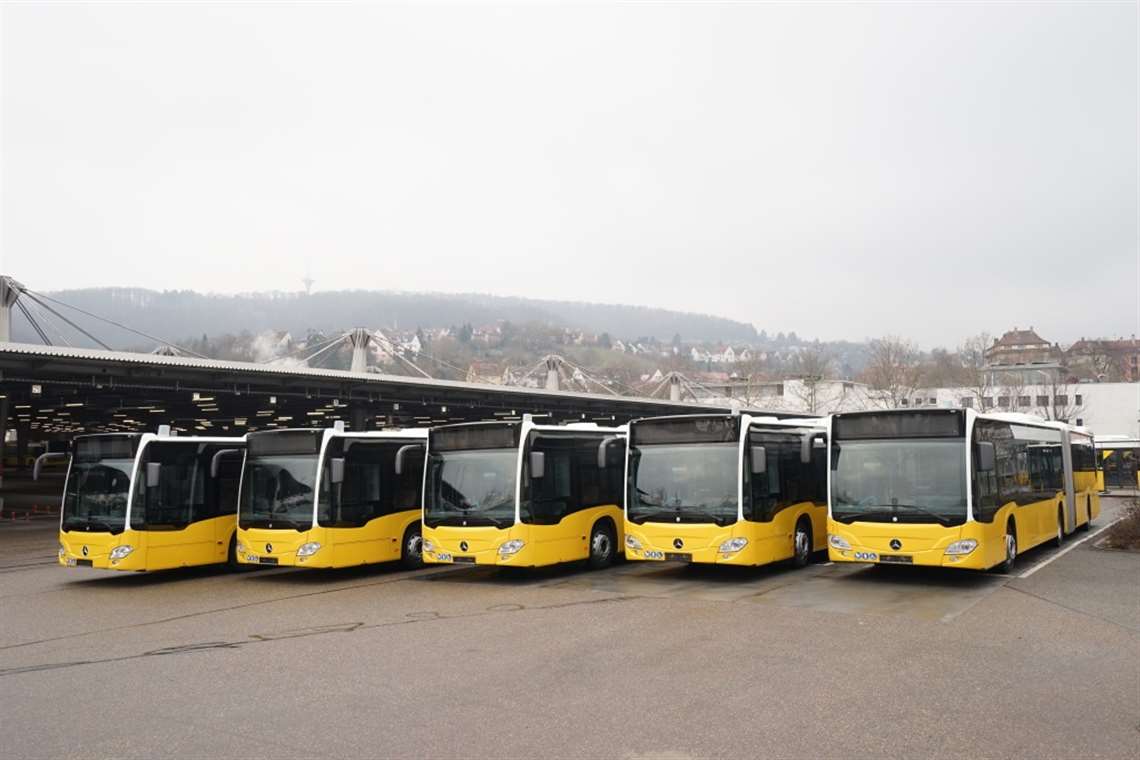First Citaro Hybrid Buses Delivered
26 December 2017

The first Mercedes-Benz Citaro hybrid buses have left the factory and will gradually go into service with Stuttgarter Strassenbahnen AG (SSB) on inner-city routes in Stuttgart, Germany.
Based on hybrid technology recently unveiled by Mercedes-Benz, the company says the buses have a fuel saving of up to 8.5 percent. In late 2018, the Citaro hybrids are due to switch to the new X1 express bus service introduced by SSB especially for low-emission buses.
“The objective with the Citaro hybrid is to make the diesel engine even more economical while optimizing the degree of electrification for maximum overall economic efficiency,” said Rüdiger Kappel, sales manager Mercedes-Benz Buses Germany.
A disc-shaped electric motor is positioned between the engine and the automatic transmission. On overrun or when the bus is braking, the motor acts as a generator to produce electric power, which is briefly stored by the Citaro hybrid in capacitors, so-called mild hybrid storage (MHS). When the bus accelerates again, the electric motor uses the stored energy to assist the diesel or gas engine with extra torque. The electric motor has a maximum output of 14 kW with a torque of 220 Nm.
On acceleration and as the vehicle pulls away, the combustion engine needs to deliver significantly less power thanks to the electric support, saving fuel. The electric motor also provides assistance at idle.
With regard to the installed components, Mercedes-Benz Buses said it intentionally opted for in-house large-scale production. For example, the electric motor serves as a starter-alternator in the current S-Class, while the additionally required cooler for the motor and inverter is used by Mercedes-Benz Trucks and the water pump can be found in many Mercedes-Benz cars.
Another positive life cycle factor is that the electric support lightens the load on the combustion engine while also taking work off the brakes during deceleration, which prolongs their service life, Mercedes-Benz said.
Mercedes-Benz said after-sales and service were also consideration in the design of the Citaro hybrid. Besides the series-produced parts used for the electric motor, energy storage and cooling, the absence of high-voltage technology is a key factor, the company said. The 48 V system is classed as low-voltage technology and can be handled without risk of injury. The ancillary components remain unchanged and are driven conventionally. The maintenance intervals for the Citaro hybrid are also identical, at 60,000 km or once a year; the same applies to all maintenance points on the conventional powertrain.
Also featured is “intelligent eco steering”. This electrohydraulic steering cuts in only when required, i.e. when the driver turns the steering wheel. In a conventional hydraulic steering system, the assistance is permanently in operation. This means that intelligent eco steering can save fuel, Mercedes-Benz said. The new steering system is standard in the Citaro hybrid.
STAY CONNECTED




Receive the information you need when you need it through our world-leading magazines, newsletters and daily briefings.
POWER SOURCING GUIDE
The trusted reference and buyer’s guide for 83 years
The original “desktop search engine,” guiding nearly 10,000 users in more than 90 countries it is the primary reference for specifications and details on all the components that go into engine systems.
Visit Now
CONNECT WITH THE TEAM









